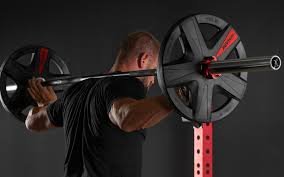
cork yoga mat
Introduction to Cork Yoga Mats
Yoga is more than just a series of postures—it’s a holistic practice that blends movement, breath, and mindfulness. The surface you practice on plays a big role in your experience, and in recent years the cork yoga mat has emerged as a favorite among both beginners and experienced yogis. Known for its natural feel, excellent grip, and eco-friendly properties, cork offers a unique alternative to traditional PVC or rubber mats.
What Makes a Cork Yoga Mat Unique
Unlike conventional mats, cork yoga mats feature a natural cork surface layered over a base material, often made of natural rubber or TPE (thermoplastic elastomer). Cork is harvested from the bark of the cork oak tree, a renewable resource that can be stripped without harming the tree. This makes it a sustainable choice for environmentally conscious practitioners.
The texture of cork is naturally anti-slip, and interestingly, it becomes even grippier when it comes in contact with moisture. This means sweaty palms during a hot yoga session can actually enhance your stability rather than reduce it.
Benefits of Cork Yoga Mats
- Eco-friendliness – Cork is biodegradable, renewable, and harvested sustainably.
- Superior grip – Becomes grippier with sweat, perfect for hot yoga or intense flows.
- Naturally antimicrobial – Resists bacteria, mold, and odors without synthetic chemicals.
- Durability – The dense surface resists wear and maintains performance over time.
- Comfort – Paired with a natural rubber base, cork mats provide cushioning without feeling overly soft.
Cork vs. Other Yoga Mat Materials
Cork yoga mats differ significantly from PVC, TPE, or foam mats. While PVC mats can be durable and affordable, they often lack the natural feel and eco-friendly credentials of cork. TPE mats are lightweight and recyclable but may not provide the same firm, steady grip. Foam mats are cushioned but can wear down quickly with heavy use.
Cork mats stand out because they balance stability, hygiene, and sustainability, making them a premium option for dedicated practitioners.
How a Cork Yoga Mat is Made
The process of making a cork yoga mat involves:
- Harvesting cork bark – Done every 9–12 years without harming the cork oak tree.
- Processing cork sheets – Cork is cleaned, pressed, and cut into thin layers.
- Bonding to the base – The cork sheet is adhered to a natural rubber or eco-friendly foam base.
- Finishing touches – Edges are trimmed, and designs or alignment markers may be printed.
High-quality mats use heat bonding instead of chemical adhesives to minimize environmental impact.
Thickness and Size Options
Cork yoga mats are usually available in thicknesses ranging from 3mm to 6mm. Thinner mats (around 3mm) are lightweight and portable, ideal for travel. Thicker mats (5–6mm) offer more cushioning for knees and joints, making them better for restorative practices or those needing extra support. Standard mats measure about 68 inches long and 24 inches wide, but extra-long options are available for taller practitioners.
Grip and Performance in Practice
One of cork’s standout qualities is its ability to improve grip when slightly damp. This makes it ideal for hot yoga, power yoga, and other sweat-intensive styles. Dry cork is still grippy, but it may feel smoother at first; some yogis lightly mist their mats before practice to enhance traction from the start.
Because cork is naturally thermoregulating, it stays cool to the touch even in warm environments, adding to overall comfort during practice.
Maintenance and Cleaning
Caring for a cork yoga mat is straightforward:
- Wipe down after each use with a soft cloth and a solution of water and mild soap or vinegar.
- Avoid using harsh chemical cleaners, which can degrade cork’s natural properties.
- Allow the mat to air dry fully before rolling it up to prevent trapped moisture.
- Store the mat in a cool, dry place away from direct sunlight to avoid drying out the cork.
Since cork is naturally antimicrobial, it doesn’t require constant deep cleaning like some other materials.
Durability and Lifespan
A well-maintained cork yoga mat can last three to five years with regular use. Its durability comes from cork’s resistance to compression and its ability to rebound to its original form. The base layer, typically natural rubber, also helps prevent stretching or curling at the edges.
Ideal Uses and Yoga Styles
Cork yoga mats are especially popular for:
- Hot yoga – Better grip with moisture.
- Vinyasa or power yoga – Stability during fast-paced flows.
- Restorative yoga – Comfortable surface for long holds.
- Outdoor yoga – Cork resists heat and stays comfortable in sunlight.
While they work well for most yoga styles, practitioners who prefer extra-soft mats for meditation or floor work may still opt for thicker foam mats.
Portability and Weight
Because cork is denser than foam, cork yoga mats can be slightly heavier, especially in thicker versions. However, the added weight often means better stability on the floor—no annoying mat bunching during transitions. Travel versions are available that use thinner cork layers to keep weight down without sacrificing performance.
Environmental Impact
Cork yoga mats appeal to eco-conscious yogis because cork harvesting is one of the most sustainable forms of forestry. The cork oak tree continues to grow and absorb carbon dioxide even after harvest, and cork forests are vital ecosystems for biodiversity. Many cork mats also use natural rubber bases, avoiding the synthetic materials found in cheaper mats.
Popular Brands for Cork Yoga Mats
Some well-known brands in the cork yoga mat market include Gaiam, Liforme, and Yoloha. Gaiam offers budget-friendly options, Liforme is known for premium mats with alignment guides, and Yoloha specializes in handcrafted cork mats made in the USA.
If you want to explore product options, you can check Yoloha’s official cork mat collection or see Gaiam’s yoga mat selection for different styles and price points.
Common Mistakes When Buying a Cork Yoga Mat
- Choosing thickness without considering portability – Thicker mats are comfortable but heavier to carry.
- Not checking base material – Some cheaper cork mats use synthetic foam bases instead of natural rubber.
- Ignoring maintenance needs – While cork is low-maintenance, it still requires occasional cleaning.
- Buying purely for aesthetics – Grip, cushioning, and size should be top priorities.
Safety Considerations
A cork yoga mat’s anti-slip nature reduces the risk of injuries from slipping, but improper cleaning or using oils and lotions before practice can make the surface slick. Always ensure your mat is clean and dry (or lightly misted if you prefer more grip) before starting your session.
The Role of Cork Yoga Mats in Modern Wellness
Beyond yoga, cork mats are being used for Pilates, stretching, and bodyweight workouts. Their natural look and feel align well with the growing trend toward sustainable wellness products. Many practitioners find that using eco-friendly gear deepens their connection to the principles of yoga, which emphasize respect for the environment and mindful living.
Final Thoughts
A cork yoga mat is more than just a surface to stand on—it’s an investment in performance, comfort, and sustainability. With its natural grip, antimicrobial properties, and eco-friendly production, it offers clear advantages over many synthetic options. Choosing the right thickness, base material, and brand ensures that your mat will support your practice for years to come. Whether you’re flowing through sun salutations in a heated studio or enjoying a peaceful session in the park, a cork yoga mat provides a steady, grounded foundation for your journey.






